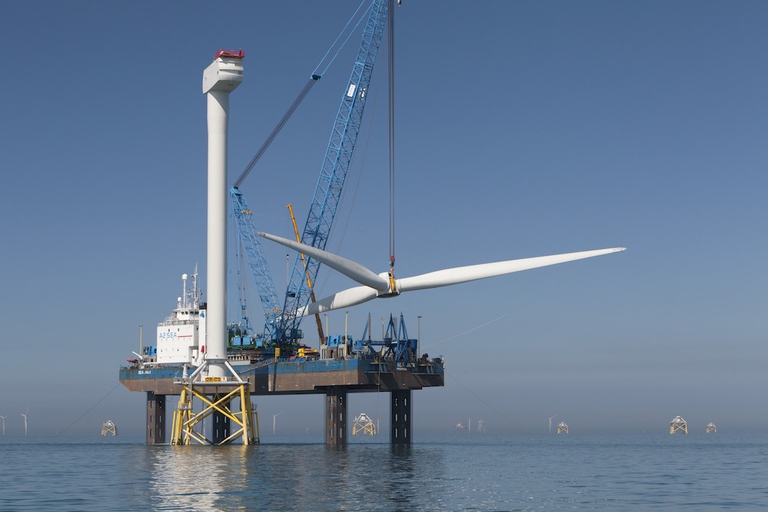
A group of experts in Tokyo suggested pouring radioactive water from Fukushima into the open sea. A marine biochemist explains the consequences of this absurd decision.
In response to the growing concerns regarding energy security and climate change, many countries across the globe are investing in the development of marine renewable energy installations. These include offshore wind farms as well as wave and tidal devices, the so-called wet renewables. The benefits of these investments for our society are indisputable, but scientists
In response to the growing concerns regarding energy security and climate change, many countries across the globe are investing in the development of marine renewable energy installations. These include offshore wind farms as well as wave and tidal devices, the so-called wet renewables. The benefits of these investments for our society are indisputable, but scientists and conservationists have cautioned towards possible detrimental consequences on marine mammal and seabird populations and are currently working on developing appropriate solutions to mitigate these impacts.
The construction of marine renewable energy plants generates loud noise, mainly as a result of fixing these structures to the seafloor. Close to the source, noise can cause temporary or permanent damage to the animals’ hearing system or mask their vocalisations. Behavioural or physiological responses may also occur. For example, marine mammals have been documented to move away from disturbed sites. On the other hand animals that are not displaced can experience increased levels of stress or changes in their feeding activity. Later, when these installations become operational, risks include direct collision resulting in injury or death or, again, disturbance from noise. However, positive effects have also been suggested: fisheries cannot access marine renewable energy sites and the structures placed in the sea can act as artificial reefs. This might promote biodiversity and, ultimately, benefit top predators.
Cutting-edge technologies are currently being used to study the behavior of the animals around the devices. These include tracking systems either attached to the animals or on the installations. Alternative ways to fix them to the seafloor and mitigation measures to reduce emitted noise also exist. However, the biggest challenge remains understanding how observed changes in behavior translate into long-term effects on the populations. Conserving wildlife populations is the main target of existing legislation (for example the European Habitats and Birds Directives), and behaviour is not necessarily a good indication of the severity of disturbance. For example, marine mammals may fail to react to noise when an area is particularly important to them, but exposure could nonetheless result in a negative impact. Advanced statistical modelling is required to bridge this gap and anticipate any long-term effect at a population level.
Viable alternatives to fossil fuels need to be implemented quickly if we want to contrast climate change. However, this should be achieved without causing additional harm to our oceans. Intense research efforts are ongoing to find novel solutions that will allow us to evaluate and minimise the negative effects of marine energy developments and preserve the status of marine wildlife populations.
Siamo anche su WhatsApp. Segui il canale ufficiale LifeGate per restare aggiornata, aggiornato sulle ultime notizie e sulle nostre attività.
![]()
Quest'opera è distribuita con Licenza Creative Commons Attribuzione - Non commerciale - Non opere derivate 4.0 Internazionale.
A group of experts in Tokyo suggested pouring radioactive water from Fukushima into the open sea. A marine biochemist explains the consequences of this absurd decision.
A federal court in Washington, D.C. has struck down the Dakota Access Pipeline, following years of campaigning by the Standing Rock Sioux tribe.
The Scottish island of Eigg is self-sufficient for its energy needs, relying almost entirely on renewable sources, especially thanks to a coordinated community effort.
President Magufuli in unmovable in going ahead with the Stiegler’s Gorge dam despite conservationists’ warnings of the damage it will cause the Selous Game Reserve’s ecosystem and wildlife.
A large dam along the Luangwa River in Zambia would have posed a serious risk to local people and wildlife, leading hundreds of thousands to oppose it. A call to which the government responded by halting plans to build it.
The first one megawatt solar power plant in the Chernobyl exclusion zone has become operational. This is the first step in a renewable energy development project promoted by the Ukrainian government in the area.
A tanker exploded at a gas and petrol station in Nigeria’s Nasarawa state on the 10th of September, killing 35 people and leaving some burned beyond recognition; 3 citizens had several spine and brain injuries, 2 of them are still on Intesive Care Units. Fela Habila , a local singer, is now stable and out of danger but
The largest tidal power plant in the world will be built in the Larantuka Straits. It will serve 100,000 people and help overcome some of the challenges of energy provision in Indonesia.
Robben Island’s solar energy micro-grid project will produce almost one million kilowatt hours of electricity annually, significantly reducing the cost and impact of buying diesel.








